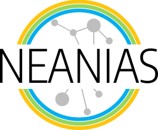The work “Evolutionary Map of the Universe (EMU): Compact radio sources in the SCORPIO field towards the Galactic plane“, with the participation of NEANIAS Space team, has been published on January 8, 2021 by Oxford Academic in the Monthly Notices of the Royal Astronomical Society.
- S Riggi, G Umana, C Trigilio, F Cavallaro, A Ingallinera, P Leto, F Bufano, R P Norris, A M Hopkins, M D Filipović, H Andernach, J Th van Loon, M J Michałowski, C Bordiu, T An, C Buemi, E Carretti, J D Collier, T Joseph, B S Koribalski, R Kothes, S Loru, D McConnell, M Pommier, E Sciacca, F Schilliró, F Vitello, K Warhurst, M Whiting, Evolutionary Map of the Universe (EMU):Compact radio sources in the SCORPIO field towards the Galactic plane, Monthly Notices of the Royal Astronomical Society, , stab028,
Abstract
We present observations of a region of the Galactic plane taken during the Early Science Program of the Australian Square Kilometre Array Pathfinder (ASKAP). In this context, we observed the SCORPIO field at 912 MHz with an uncompleted array consisting of 15 commissioned antennas. The resulting map covers a square region of ∼40 deg2, centred on (l, b)=(343.5○, 0.75○), with a synthesized beam of 24”×21” and a background rms noise of 150-200 μJy/beam, increasing to 500-600 μJy/beam close to the Galactic plane. A total of 3963 radio sources were detected and characterized in the field using the CAESAR source finder. We obtained differential source counts in agreement with previously published data after correction for source extraction and characterization uncertainties, estimated from simulated data. The ASKAP positional and flux density scale accuracy were also investigated through comparison with previous surveys (MGPS, NVSS) and additional observations of the SCORPIO field, carried out with ATCA at 2.1 GHz and 10” spatial resolution. These allowed us to obtain a measurement of the spectral index for a subset of the catalogued sources and an estimated fraction of (at least) 8% of resolved sources in the reported catalogue. We cross-matched our catalogued sources with different astronomical databases to search for possible counterparts, finding ∼150 associations to known Galactic objects. Finally, we explored a multiparametric approach for classifying previously unreported Galactic sources based on their radio-infrared colors.
Keywords
radio continuum: general, catalogues, surveys, Galaxy: general, techniques: interferometric, techniques: image processing.
Please, get the whole article at Oxford Academic.
